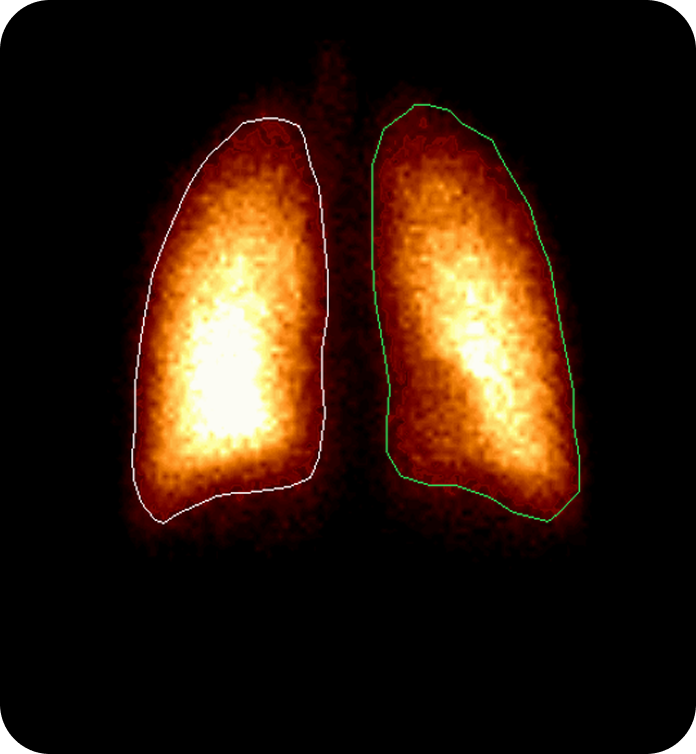How Gamma Scintigraphy Supports Inhalation Formulation
Gamma scintigraphy is a non-invasive imaging technique that uses a radiolabel to track inhaled drugs inside the lungs of healthy volunteers or patient populations.
Scientific Benefits
Accurate Lung Deposition Mapping: By tagging the inhaled drug with a gamma-emitting tracer, scientists can visualize and precisely measure how much drug reaches the lungs and where it deposits—such as in inner (central) or outer (peripheral) lung regions.
Quantifies Delivered Dose: The method determines the percentage of the inhaled dose that actually reaches the lungs versus what is lost in the mouth, throat, or device.
Compares Formulations and Devices: Gamma scintigraphy allows direct comparison of different inhaler designs or formulations, helping scientists see which options deliver drugs most efficiently and consistently.
Supports Regulatory Approval: The quantitative, in vivo data are valuable for demonstrating bioequivalence and local drug delivery, supporting regulatory submissions for new inhaled products.
Optimizes Product Development: Real-time feedback on drug deposition helps researchers quickly refine formulations and inhaler devices, bridging the gap between lab tests and clinical trials.
In Summary: Gamma scintigraphy gives inhalation formulation scientists clear, quantitative data on where and how much drug is delivered in the lungs, enabling better product optimization and supporting regulatory approval.

